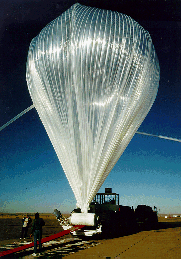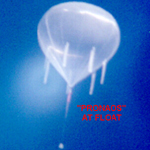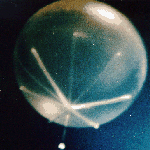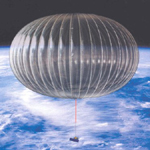The Tallest Buildings on Every Continent 🌍🏙️
Here’s a list of the tallest buildings across each continent, showcasing the heights of modern architectural marvels:
1. Asia: Burj Khalifa, Dubai, UAE – 828 meters (2,717 ft)
2. North America: Central Park Tower, New York City, USA – 472 meters (1,550 ft)
3. Europe: Lakhta Center, Saint Petersburg, Russia – 462 meters (1,516 ft)
4. Australia/Oceania: Q1 Tower, Gold Coast, Australia – 322 meters (1,058 ft)
5. Africa: The Leonardo, Johannesburg, South Africa – 234 meters (768 ft)
6. South America: Gran Torre Santiago, Santiago, Chile – 300 meters (984 ft)
7. Antarctica: No tall buildings (primarily research stations)
These iconic structures are not only feats of engineering but also cultural landmarks representing their regions.
THE TALLEST
BUILDINGS ON
EVERY CONTINENT
THE 5 TALLEST BUILDINGS IN ASIA:
1️⃣. 828 m (2,715 ft) BURJ KHALIFA Dubai, UAE , 2010.
2️⃣. 632 m (2,073 ft) SHANGHAI TOWER Shanghai, China, 2016.
3️⃣. 601 m (1971ft) MAKKAH ROYAL CLOCK TOWER HOTEL Mecca, Saudi Arabia, 2012.
4️⃣. 597 m (1958 ft) GOLDEN FINANCE 117 Tianjin, China, 2018.
5️⃣. 592 m (1942 ft) PING AN FINANCE CENTER Shenzhen, China, 2017.
THE 5 TALLEST BUILDINGS IN NORTH AMERICA
1️⃣. 541 m (1775 ft) ONE WORLD TRADE CENTER New York City, United States, 2014.
2️⃣. 472 m (1549 ft) CENTRAL PARK TOWER New York City, United States, 2020
3️⃣. 442.1 m (1451 ft) WILLIS TOWER Chicago, United States, 1974.
4️⃣. 435 m (1427 ft) 111 WEST 57TH STREET New York City, United States, 2020.
5️⃣. 427 m (1401 ft) ONE VANDERBILT New York City, United States, 2020.
THE 5 TALLEST BUILDINGS IN EUROPE
1️⃣. 462.5 m (1517 ft) LAKHTA CENTER
Saint Petersburg, Russia, 2019.
2️⃣. 373.7 m (1226 ft) FEDERATION TOWER: EAST TOWER Moscow, Russia, 2016.
3️⃣. 354.1m (1162 ft) OKO: SOUTH TOWER Moscow, Russia, 2015.
4️⃣. 345 m (1132 ft) NEVA TOWER 2 Moscow, Russia, 2019.
5️⃣. 338.8 (1112 ft) MERCURY CITY TOWER Moscow, Russia ,2013.
THE 5 TALLEST BUILDINGS IN OCEANIA
1️⃣. 323 m (1059 ft) Q1 Gold Coast, Australia, 2005.
2️⃣. 316.7 m (1039 ft) AUSTRALIA 108 Melbourne, Australia, 2020.
3️⃣. 297 m (974.4 ft) EUREKA TOWER Melbourne, Australia, 2006.
4️⃣. 271.3 m (890 ft) CROWN SYDNEY Sydney, Australia, 2020.
5️⃣. 270.5 m (887.4 ft) AURORA MELBOURNE CENTRAL Melbourne, Australia, 2019.
THE 5 TALLEST BUILDINGS IN SOUTH AMERICA
1️⃣. 300 m (984.2 ft) GRAN TORRE Santiago, Chile, 2014.
2️⃣. 281 m (922 ft) YACHTHOUSE RESIDENCE CLUB: TOWERS 1 AND 2 Balneãńo Camboriú, Brazil, 2020.
3️⃣. 239 m (784.1 ft) ALVEAR TOWER Buenos Aries, Argentina, 2017.
4️⃣. 235 m (771 ft) INFINITY COAST Balneãńo Camboriú, Brazil, 2019.
5️⃣. 225 m (738 ft) PARQUE CENTRAL COMPLEX: EAST TOWER Caracas, Venezuela, 1983.
THE 5 TALLEST BUILDINGS IN AFRICA
1️⃣. 234 m (768 ft) THE LEONARDO Johannesberg, South Africa, 2019.
2️⃣. 223 m (732 ft) CARLTON CENTRE Johannesberg, South Africa, 1973.
3️⃣. 200 m (656.2 ft) BRITAM TOWER Nairobi, Kenya, 2017.
4️⃣. 173 m (568 ft) PONTE CITY APARTMENTS Johannesburg, South Africa,1975.
5️⃣. 163 m (535 ft) UAP TOWER Nairobi, Kenya, 2016.
Note: Antarctica was omitted from this chart. The tallent buildings in Antarctica are the LONG DURATION BALLOON PAYLOAD PREPARATION BUILDINGS, which stand at 15 meters or 49 feet in height.
The Long Duration Balloon Facility
The purpose of my deployment to Antarctica is to help the Stratospheric Terahertz Observatory II (STO-2) team launch a science payload to look at the star forming regions in the galaxy. STO-2 will fly aboard a Long Duration Balloon (LDB). The LDB program is part of the Columbia Scientific Balloon Facility, which launches payloads all over the world.
The STO-2 team traveled to the LDB headquarters in Palestine, Texas, last July and August for a hang test to ensure the payload is ready for launch. From there it was taken apart and shipped to Antarctica. The gondola was then shipped to New Zealand on a barge and flown from New Zealand to McMurdo Station on a supply mission. The instrument was flown the whole way to McMurdo.

The STO-2 team just after passing the hang test in Palestine, Texas, in August 2015.
After shipping the payload, the team started to reassemble it in the second half of October on the ice. (I was waiting to travel to McMurdo until backup parts were completed in mid November in case important equipment failed.) It's here in McMurdo that we unpack and reassemble the payload and continue instrument testing and reintegration.
Every day, we leave McMurdo at 7:30 a.m. and travel about six miles from McMurdo Station to the LDB facility just beyond Willy Field on the Ross Ice Shelf. We arrive between 8:05 and 8:15 depending on the driver and the mode of transportation. One of the buses is Ivan "the terra" bus, pictured below. The field camp consists of two hangars for the the payloads, a dining hall (called the galley), a bathroom facility and two smaller shelters for the Columbia Scientific Balloon Facility staff. This year, there are two payloads, STO-2 and the Gamma Ray Imager/ Polarimeter for Solar flares (GRIPS) payload. In some years there are three payloads, but never more than that.

The LDB facility. From the left: a yellow storage facility, the GRIPS hangar (green stripe), the STO-2 hangar (brown stripe), the CSBF machine shop, the CSBF telemetry workshop, the bathroom, and all the way to the right, the yellow tent is the galley.
There's a cook in the galley during lunchtime and coffee, tea, and hot chocolate whenever you need it. Furthermore, we have views of Mt. Erebus, the southern-most active volcano on Earth. Most days it is covered in clouds, but when the clouds clear, it's one of my favorite things to photograph. For a harsh continent, it's a good life!
After a full day of work, we leave LDB at 5:30 p.m. and are back in McMurdo for dinner between 6:05 and 6:15 p.m.
 Boarding Ivan "the terra" bus with my colleague Jose Siles.
Boarding Ivan "the terra" bus with my colleague Jose Siles.
Instrument Update:
The STO-2 gondola team has successfully tested the pointing system for the telescope, pointing on the sun and Venus. In order to do their tests, they had to open the hangar doors so the hangar could cool to the ambient temperature -- about 20 degrees F right now. The instrument team is glad that they are done until integration of the instrument with the gondola is complete.
The STO-2 instrument will be explained for a general audience in a future post. For our colleagues following us back home, the team has made progress in aligning the 1.5 and 1.9 THz local oscillators and is simultaneously conducting beam pattern measurements. The 4.7 THz channel has measured a Y-Factor (sensitivity measurement). If you are interested in the details, please communicate with us privately.
Scientific Balloons...
1. can be launched from locations worldwide to suport scientific needs.
2. can be readied for flight in as little as six months.
3. offer a low-cost method of conducting science investigations.
4. provide a stable platform for longer flight durations.
Scientists use scientific data collected during balloon flights to help answer important questions about the universe, atmosphere, the Sun and the space environment. Questions such as "How did the universe, galaxies, stars, and planets form and evolve?" and "Are there Earth-like planets beyond our solar system?" are being answered by NASA with the help of experiments flown on scientific ballons.
Standard NASA scientific balloons are constructed of polyethylene film; the same type material used for plastic bags. This material is only 0.002 centimeters (0.0008 inches) thick, about the same as an ordinary sandwich wrap. The film is cut into banana-peel shaped sections called gores and heat sealed together to form the balloon. Up to 180 gores are used to make NASA's largest balloons. These standard, zero-pressure, balloons are open to the atmosphere at the bottom to equalize the internal pressure with the surroundings. The balloon system includes the balloon, the parachute and a payload that holds instuments to conduct scientific measurements.
Helium, the same gas used to fill party balloons, is used in NASA balloons. These very large balloons can carry a payload weighing as much as 3,600 kilograms (8,000 pounds), about the weight of three small cars. They can fly up to 42 kilometers (26 miles) high and stay there for up to two weeks.
The Balloon Program's capabilities are being expanded with the development of an Ultra Long Duration Balloon (ULDB). The ULDB is made of advanced materials and uses a new pumpkin-shaped balloon design to achieve flights of up to 100 days. The ULDB is completely sealed and pressurized in order to maintain constant altitude night and day. The ULDB payload consists of a solar power system, radio receivers and transmitters, computers, batteries and other systems required for science experiments.
The balloon is launched by partially filling it with helium and launched with the payload section suspended beneath it. As the balloon rises, the helium expands, filling the balloon until it reaches float altitude in two to three hours.
After the science measurements are complete, flight controllers send a radio command that separates the payload from the balloon. The payload floats back to the ground on a parachute where it can be retrieved and flown again. Payload separation creates a large tear in the balloon material, which releases any remaining helium. The balloon also falls to the ground, where it s retrieved and discarded. The balloon and payload land approximately 45 minutes after separation.
 | Balloons have been used for decades to conduct scientific studies. While the basics of ballooning have not changed, balloon capabilities have increased and their dependability has improved greatly. |









No comments:
Post a Comment